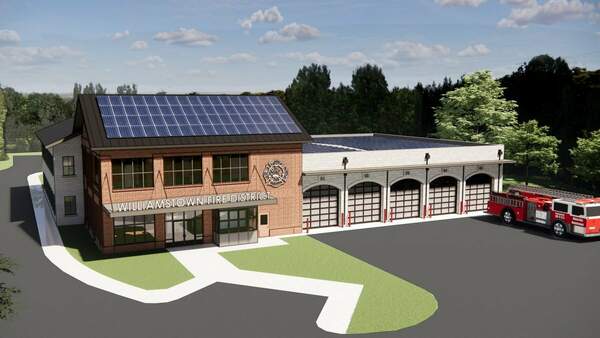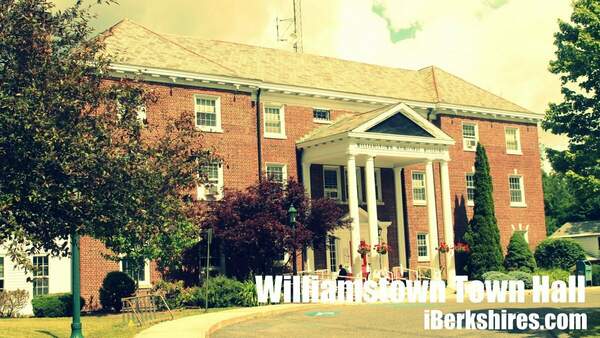Williamstown Planning Board Reassesses 2002 Master Plan
|
The Planning Commission is questioning whether the decade-old Master Plan recommendations apply to Williamstown in 2013. |
WILLIAMSTOWN, Mass. — The Planning Board on Tuesday night took a long look at the 10-year-old plan for economic development and discussed what has been done, what could be done and what might not need to be done.
The planners spent most of their meeting considering the Economic Development Recommendations developed for the 2002 Master Plan.
Generally, they found that the actions that the plan recommended for zoning changes have been made. But the panel also expressed doubts that some of the actions recommended in '02 are still relevant today.
For example, Pat Dunlavey questioned the Master Plan's emphasis on development of tourism.
The 2002 document makes numerous references to the town's growing tourist trade as an engine of economic development, and recommends specifically that "tourism be encouraged as a major avenue of economic development."
"I feel the future of Williamstown as a tourism destination will take care of itself if we focus on Williamstown as a lifestyle destination," Dunlavey said. "Our economic strength has to be in the area of people coming to Williamstown because it's where they want to live."
Planning Board Chairwoman Ann K. McCallum took issue with the Master Plan's recommendation that the town's business district be expanded toward Water Street.
The town in 2009 approved the expansion of the Village Business District to include Water Street.
"I'm all for commercial development wherever we can, but [the demand] is not there," McCallum said. "To be a viable town, you need a concentration of retail. I don't want to try to push it toward Water Street when Spring Street is lacking in vibrancy."
Board member Elizabeth McGowan agreed.
"When this was written, there may have been fewer empty storefronts on Spring Street," she said of the '02 document. "Now, it's like a hockey player's smile."
In general, though, the planners gave themselves and their predecessors on the panel credit for removing some of the impediments to commercial development on Spring Street, Williamstown's "downtown."
"We've already done what we can [through zoning]," McCallum said. "The issues stopping people from opening businesses on Spring Street are high rents ... and an old building stock. It costs a lot to move in and bring buildings to code.
"There's nothing we can do through zoning."
The panel did favor a change to the wording of the 2002 Master Plan's recommendation for the old town garage site at 59 Water St. The document calls for the site to be used for "commercial-retail development and to accommodate future parking needs of the business district."
McCallum advocated for a change to "high-density residential" for the site.
The planners also favored a tweak to the language in the Master Plan calling for development of "rental units" in the village center. There was a consensus on the board to change that line to "high-density residential use."
At one point, McCallum struck a cautious note about proposing any changes to the '02 Master Plan.
"This book has a huge group of people who contributed to it, and if four or five of us (planner Richard DeMayo could not attend Tuesday's meeting because of illness) make changes, it doesn't have the same legitimacy," she said.
|
Town Planner Andrew Groff cautioned that the sewer along Route 7 can't handle dense development. |
But planner D. Chris Winters made the case for the board to act.
"Don't underestimate your own legitimacy in having been elected to the Planning Board," he said.
In other business Tuesday, the planners decided to seek public input on a proposal to change the zoning along much of Cold Spring Road to reflect its current use.
The stretch of Route 7 south of Bee Hill Road is zoned Rural Residence 3 (RR3), but there are several lots that have been granted exceptions to allow commercial operations — for example, the 1896 House inn and '6 House Pub.
The planners are considering a change to essentially combine the RR3 zone with elements of the town's Tourist Business District designation.
Town Planner Andrew Groff raised the caveat that overdevelopment could overtax the sewer system in that part of town, but the planners agreed that the large frontage and setback requirements in the district would prevent high-density development.
The board decided to invite residents of the district to attend the panel's Feb. 12 meeting to provide public comment.
The Planning Board discussed but took no action on a recommendation from town counsel that the town enact a moratorium on medical marijuana dispensaries to allow further study in light of the Jan. 1 enactment of Question 3 from last November's election.
The law allows for up to 35 state-licensed dispensaries throughout the commonwealth. Although none of the planners knew of anyone seeking to place a dispensary in Williamstown, they appeared disinclined to do anything to prevent it.
"I think the message from the voters would back that up," Winters said.
The town voted in favor of Question 3 by a margin of 2,653 to 978, or 73 percent in favor.
Tags: economic development, housing, master plan,

.JPG)
.JPG)
 WILLIAMSTOWN, Mass. — The Prudential Committee on Wednesday signed off on more than $1 million in cost cutting measures for the planned Main Street fire station.
WILLIAMSTOWN, Mass. — The Prudential Committee on Wednesday signed off on more than $1 million in cost cutting measures for the planned Main Street fire station.













